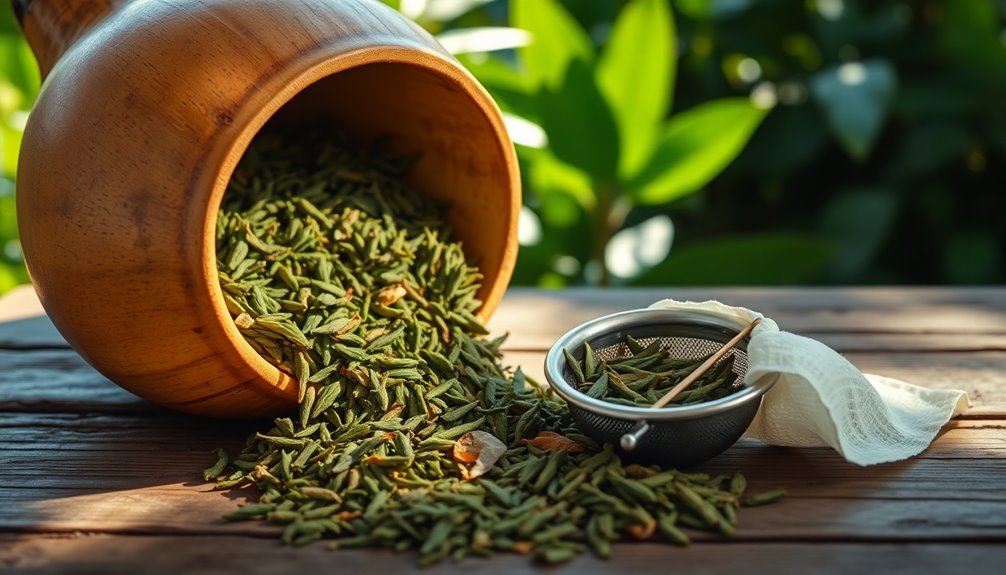To dispose of yerba mate, you have a few eco-friendly options. First, avoid tossing used leaves in regular waste, as they can contribute to landfill issues. Instead, consider composting them; they enrich soil and reduce waste impact. If you're dealing with packaging, recycle recyclable materials like aluminum, as it uses less energy than producing new. Be mindful of fungal contamination by ensuring your drinking vessels stay clean. By choosing sustainable disposal methods, you help protect the environment and your health. There's more to explore on ways to manage yerba mate effectively and responsibly.
Key Takeaways
- Compost used yerba mate leaves to enrich soil and reduce landfill waste, turning it into valuable humus for gardens.
- Recycle packaging materials, like aluminum, to minimize waste and conserve energy; check local recycling rules for specifics.
- Ensure your drinking vessels are clean to prevent fungal contamination, promoting safe consumption of yerba mate.
- Participate in community composting programs to properly dispose of organic waste and support local sustainability efforts.
- Dispose of any moldy or contaminated yerba mate in a sealed bag before throwing it away to prevent spreading spores.
Understanding Fungal Contamination
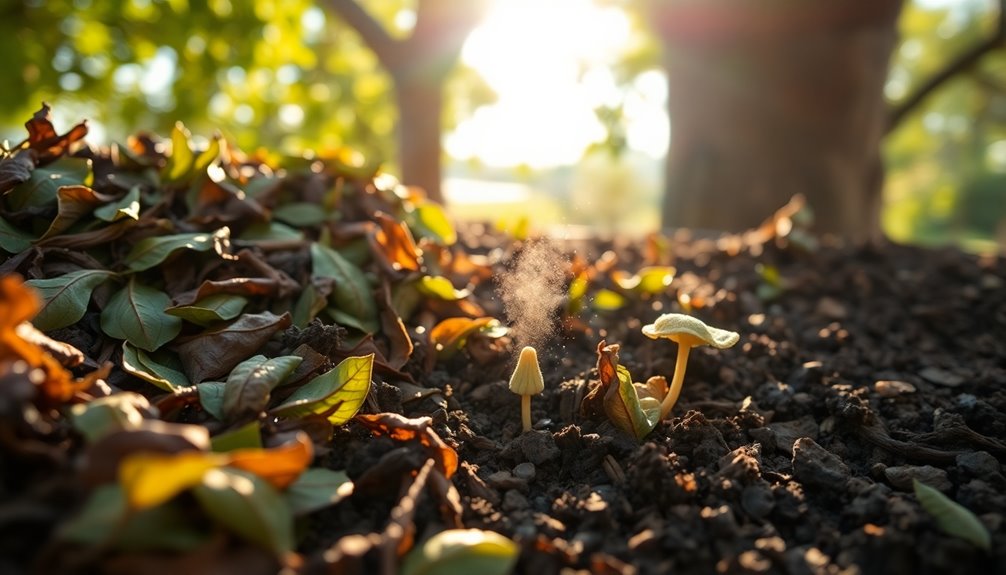
When you enjoy yerba mate, it's essential to be aware of the potential for fungal contamination.
Studies show that almost all yerba mate brands have significant fungal growth, with some packing up to 4,900 colony-forming units per gram. Pathogenic fungi like *Fusarium* and *Pythium* can survive harsh conditions, posing risks, especially to immunocompromised individuals. Additionally, the presence of these pathogenic fungi in yerba mate waste raises concerns for crop contamination and underscores the importance of proper waste disposal practices.
Contamination can happen during farming, processing, or even at home. Even after heat treatment, harmful fungal structures may remain.
To protect yourself, regularly check yerba mate for mold and maintain cleanliness in your drinking vessels. Being mindful of these factors can help you enjoy yerba mate safely while minimizing the risk of fungal-related health issues.
Environmental Impact of Waste
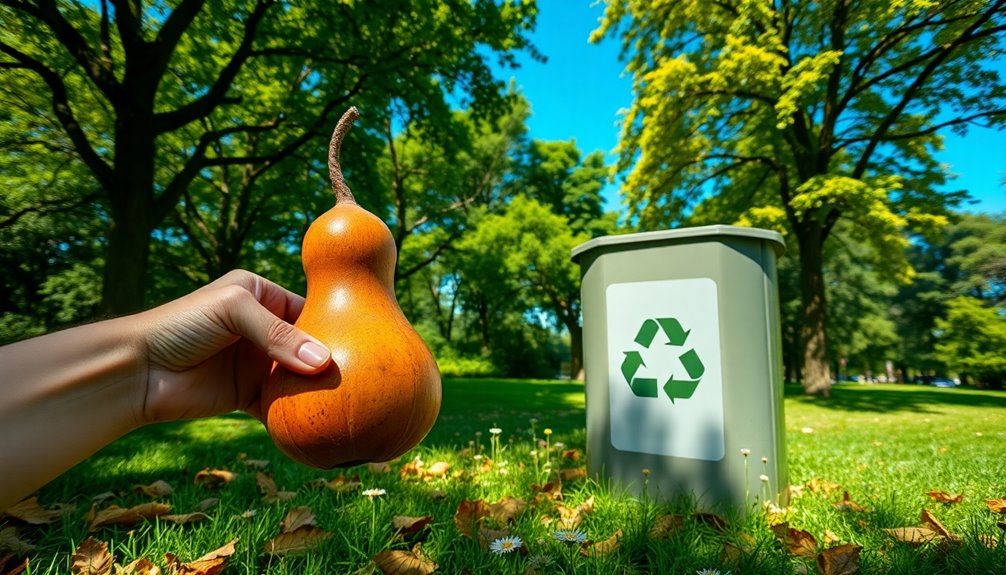
Fungal contamination isn't the only concern when it comes to yerba mate consumption; the way we dispose of waste also has a significant environmental impact.
Improper disposal leads to land pollution, where waste accumulates on soil, breaking down and seeping harmful substances into the ground. This contamination can jeopardize the health of both people and animals. Furthermore, loss of biodiversity is a critical consequence of neglecting proper waste disposal, as it disrupts ecosystems and threatens various species.
Additionally, as waste decomposes, it releases greenhouse gases like methane, contributing to air pollution and climate change.
You mightn't realize that plastic waste harms marine life, leading to deaths and ecosystem disruption.
Every piece of trash left in nature can threaten habitats and drive species to extinction.
It's essential to think about your waste disposal methods to protect our planet's delicate ecosystems.
Recycling and Composting Options
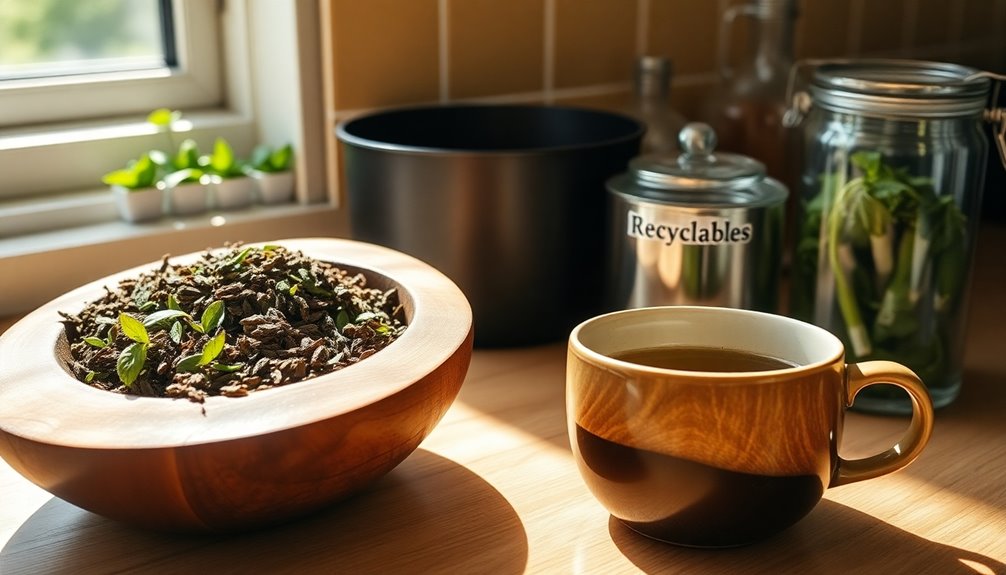
To effectively manage yerba mate waste, you can explore various recycling and composting options that not only reduce landfill contributions but also enrich your garden.
Composting yerba mate requires a slow decomposition process, turning it into valuable humus that benefits your plants. Make sure to wait until the yerba mate has lignified, showing a granular coffee-colored appearance, before adding it to your compost bin. Adding yerba mate to your compost can enhance soil quality by providing essential nutrients for plant growth.
Mixing it with other organic waste, like fruit peels, enhances nutrient transfer. Once composted, you can use it as a natural fertilizer or directly apply it to flower beds and tomato plant pots.
Additionally, involving your community in composting promotes sustainable waste management practices, creating a healthier environment for all.
Effective Packaging Disposal
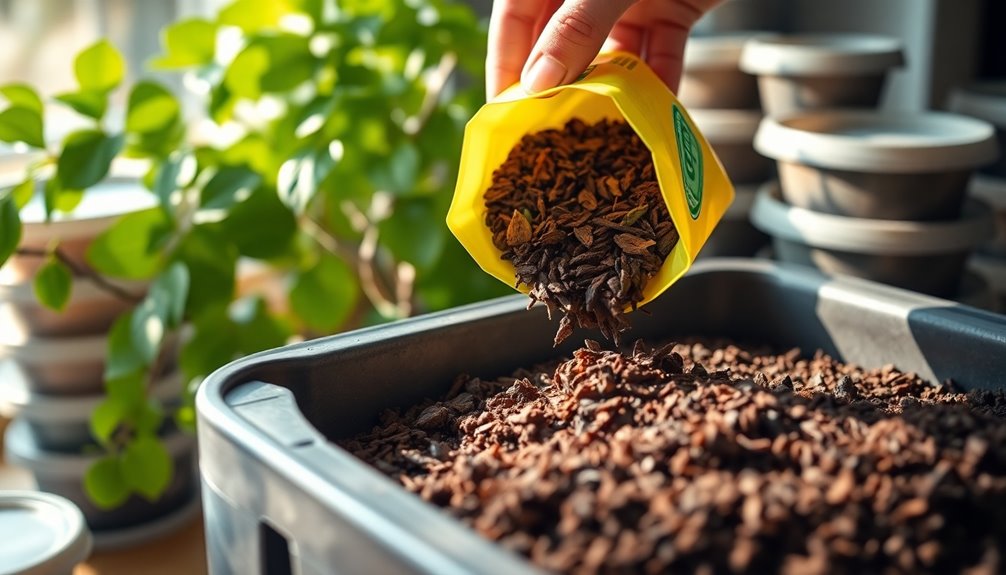
After exploring recycling and composting options for yerba mate, it's important to address how you can effectively dispose of packaging materials associated with your beverage.
To minimize waste, opt for recyclable and reusable materials whenever possible. Consider investing in industrial shredders to shred paper and cardboard, making them easier to recycle. Reuse packaging systems to cut down on single-use items. Additionally, implementing minimal packaging design principles can significantly reduce the amount of material waste generated.
For materials like EPS coolers, dispose of them in the dumpster, as they're not typically recyclable. Remember to break down cardboard boxes to fit flat in recycling bins and allow bubble wrap to thaw before recycling it.
Traditional Processing Insights
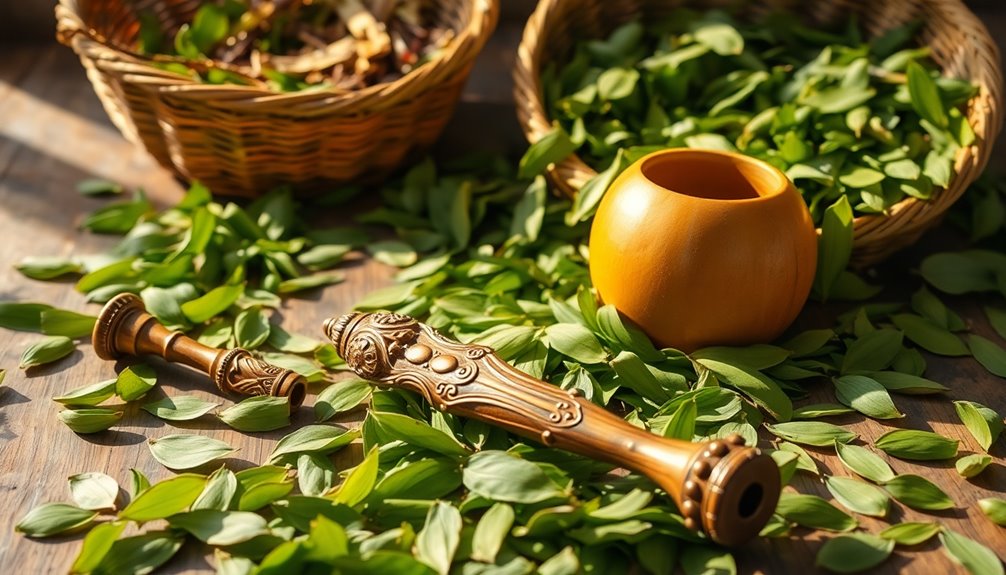
While exploring yerba mate, it's crucial to understand its traditional processing methods, which greatly influence the beverage's flavor and quality.
The harvesting cycle occurs every two years, with trees ready at 4-6 years old. Experienced workers prune the trees, ensuring sustainability. In processing plants, leaves are heated to 400°C using the Cleanheat System, breaking down protective enzymes. They're then dehydrated in a controlled environment to preserve nutritional properties. Additionally, Argentina is the largest yerba mate producer as of 2024, highlighting the beverage's significance in the region.
When preparing your mate, remember to maintain your gourd and bombilla by cleaning them properly. Curing gourds and treating wooden mates prevent damage, enhancing your experience.
Understanding these traditional methods enriches your appreciation for yerba mate and its unique characteristics.
Company Waste Management Initiatives

As companies increasingly recognize the environmental impact of waste, many are implementing innovative waste management initiatives to promote sustainability.
For instance, Unilever and Procter & Gamble are committing to 100% recyclable or reusable packaging by 2030. Intel aims for zero waste status in 60% of its waste streams by 2030, while Microsoft plans to divert 90% of its waste from landfills. Sierra Nevada has diverted 99.8% of its waste from landfills since 2013 by repurposing used brewing ingredients as feed for local farms.
Walmart aspires to achieve zero waste globally by 2025 and engages communities through educational campaigns. McDonald's is working to reduce packaging by 20% and incentivizes responsible litter disposal through initiatives like LitterLotto.
These efforts demonstrate a collective commitment to reducing waste and fostering a circular economy, making a significant impact on environmental health.
Alternative Disposal Methods

When you finish your yerba mate, consider how you can dispose of it in eco-friendly ways. One great option is composting. Used yerba mate is rich in vitamins and minerals, making it an excellent addition to your compost heap. Worms love it too, helping to create a thriving compost environment. You can even apply it directly to your flower beds or tomato plant pots for a natural fertilizer boost.
If you're using aluminum cans, remember they're infinitely recyclable. Simply rinse them out and toss them in your recycling bin to save energy and natural resources. Aluminum is produced from naturally abundant materials, ensuring that your recycling efforts contribute to a sustainable cycle.
Finally, don't forget to clean your gourd properly to guarantee a safe and enjoyable experience next time!
Benefits of Composting
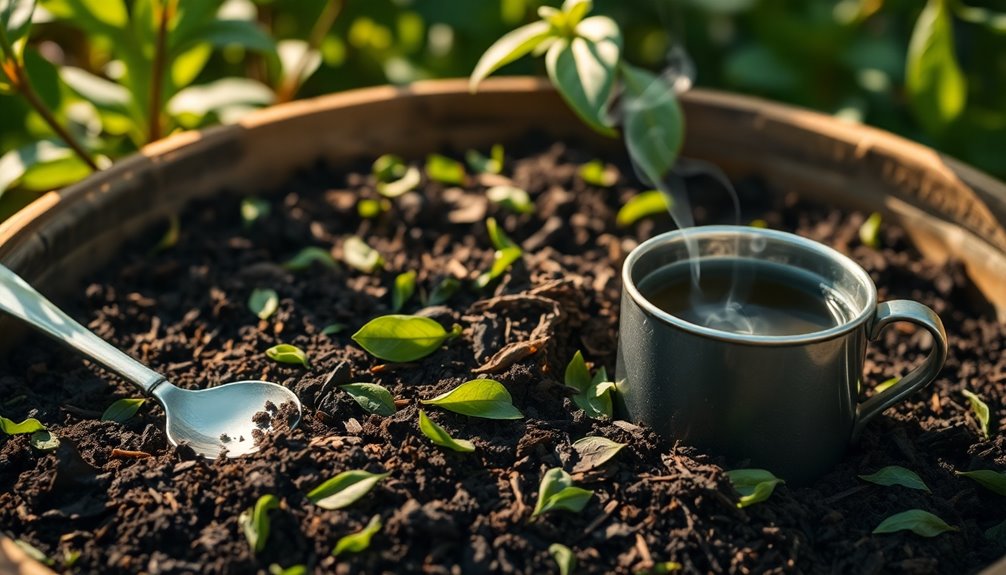
Composting used yerba mate not only helps you dispose of it responsibly, but it also brings a host of benefits to the environment and your garden.
By enriching your soil with nutrients, compost boosts moisture retention and suppresses pests, reducing your reliance on chemical fertilizers. It also promotes soil regeneration, fostering beneficial microorganisms that enhance overall soil health. Furthermore, composting encourages beneficial microorganisms' production, which strengthens the ecosystem of your garden.
Additionally, composting captures harmful pollutants, prevents erosion, and sequesters carbon, contributing to a cleaner atmosphere.
As you compost, you're not just improving your garden; you're actively participating in a sustainable cycle that extends landfill life and lowers waste management costs.
Ultimately, composting yerba mate transforms waste into a valuable resource, benefiting both you and the planet.
Sustainable Practices in Disposal
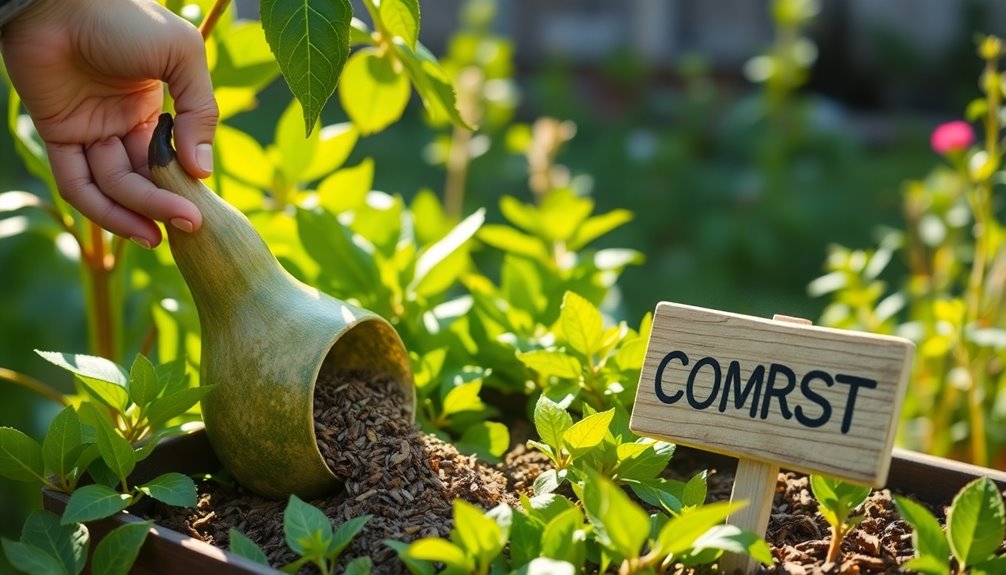
Sustainable practices in the disposal of yerba mate can greatly reduce your environmental footprint while benefiting your garden.
Composting yerba mate transforms it into a nutrient-rich soil amendment, helping your plants thrive while cutting down on landfill waste. If composting isn't an option, consider using the used leaves as mulch or mixing them into your garden beds. By adopting Integrated Pest Management (IPM) techniques, you can also enhance the overall health of your garden ecosystem. Additionally, incorporating diverse forage into your compost can further improve soil health and plant growth.
Don't forget about yerba mate packaging! Many materials, like aluminum cans, are highly recyclable and require considerably less energy to process when recycled.
Look for community programs that support organic waste recycling. By adopting these practices, you'll not only support biodiversity and sustainable agriculture but also contribute to long-term environmental stewardship.
Frequently Asked Questions
Can I Compost Yerba Mate Tea Bags?
You might be wondering if you can compost yerba mate tea bags.
Unfortunately, they often contain non-compostable materials like plastics, staples, and glues, which can harm your compost. Even if labeled compostable, these bags may still have harmful components.
Instead, consider composting loose-leaf yerba mate, which enriches your soil.
If you have tea bags, it's best to dispose of them in the trash or check local recycling options instead.
What Are the Signs of Mold on Yerba Mate Waste?
When you're dealing with yerba mate waste, keep an eye out for signs of mold.
Look for fuzzy, hair-like specks, especially around the bottom or crevices of your gourd. If it smells bad, that's another red flag.
You can do a wipe-off test; if the spots come off easily, they're likely mold.
How Can I Tell if Yerba Mate Is Still Fresh?
To tell if yerba mate is still fresh, check its color and appearance; it should be olive green with a matte sheen. Additionally, fresh yerba mate should have a fragrant aroma that hints at its herbal notes. If the leaves appear dull or brownish and lack that vibrant olive color, it may have lost its potency and flavor. Interestingly, as you explore different flavor profiles, you might also delve into the dagobas raw cacao history, which reveals the fascinating journey of this ancient ingredient and its deep roots in various cultures.
Smell it for a sweet, earthy aroma—if it's musty, it might be stale.
Feel the leaves; they should be flexible and slightly moist, not dry and brittle.
Finally, taste it; fresh yerba mate should have a robust flavor.
If it lacks these qualities, it's likely past its prime.
Is There a Specific Way to Store Used Yerba Mate?
When it comes to storing used yerba mate, you've got a few options.
First, let it cool down before placing it in an airtight container to prevent moisture buildup.
Keep it in a cool, dry place, away from direct sunlight.
If you're planning to reuse it, try to use it within a few days for the best flavor.
Can Used Yerba Mate Be Safely Fed to Pets?
You might think giving your pets used yerba mate is harmless, but it's not.
Theobromine and caffeine can be toxic to both dogs and cats, leading to serious health issues.
Even though some ingredients are less harmful to cats, it's best to play it safe and avoid feeding them yerba mate altogether.
Stick to pet-safe treats, and guarantee your furry friends stay happy and healthy by keeping potentially dangerous items away from them.
Conclusion
In summary, disposing of yerba mate responsibly is essential for both your health and the environment. Consider composting your used leaves; they enrich the soil and reduce waste. For instance, a local café in Argentina started composting their yerba mate waste and saw a significant reduction in landfill contributions while boosting their garden's productivity. By choosing sustainable disposal methods, you can make a positive impact and encourage others to do the same.
